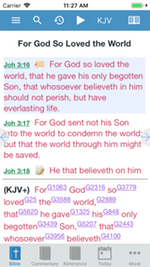
Some of the books of the Brit Chadasha have Aibreet idioms, or word puns. One translation, called MattithYahu, is from the du Tillet Hebrew Manuscript (it has an excellent glossary).

Many of these manuscripts were altered to be more similar to the Greek translation (a process called assimilation into Greek). Petersburg Manuscript, the Breslau Manuscript, lettered ones (A, B, D to F), and 14 unpublished ones. There are 23 known manuscripts including the St. įor the Shem-Tov's Hebrew Matthew, the two closest manuscripts to the original Matthew are the British Library Manuscript and Manuscript C. Eli Lizorkin-Eyzenberg's The Hebrew New Testament, and James Trimm's blog on The Aramaic Origin of the Pauline Epistles. S ee also PromteThe Truth's Hebrew/Aramaic Origins of the New Testament, Dr. Jeff Benner, AHRC, has a playlist of videos for the Semitic Origins of the NT (6 YouTube videos). Sadly, those writings were destroyed or, that which survived, have been mostly lost due to time. While some (or many) of the inspired writers received the gift of tongues to speak other languages, they wrote in Aibreet, for first the people of Y'shra'al (Israel) then for the other nations, the Gentiles.

A nice summary of the Hebrew New Testament was made by the World Christian Ministries Association. The Brit Chadasha was originally written in the Aibreet language, then translated into Aramaic, and then again into Greek. Many of these scrolls were transcribed into Masoretic Hebrew language (modern Semitic, which added vowel and grammar points into the manuscripts). (thanks to Qahal Ha Bayit Yah for many of the details above)Īll of the Scriptures were written in Proto-Canaanite ( or Picto Hebrew, early Semitic), Canaan-Phoenician (or Old Hebrew, also called Paleo Hebrew, middle Semitic), Mishnaic Hebrew, and/or Aramaic Hebrew ( square shaped, late Semitic) scripts (abjad and later alphabets) since the writers were Aibreem and the Aibreet language is the set-apart language. The Apocrypha is the collection of writings that may have historical information, but are not directly quoted in the Scriptures (in a contemporary manner) they are not written under the inspiration of Yahuah (some have accuracy issues).

In proper translations, names are transliterated (so the spellings may differ, but the sounding should be similar), thus the sacred names are derived from YH U H (or YH W H) and YH U SO (or YH W SO) - Yahuah and Yahusha. The Brit Chadasha refers to, and builds upon, the Brit Rishon. The Brit Chadasha contains the Besorat Geulah (Good News of Redemption), haEegarot (The Epistles), and Chazon (Revelation). These groups of writings are frequently called the Tanakh (Turah + Nebi'im + Ketubim). The Brit Rishon contains the Turah, or Torah, ("Teaching", the five books of Moses), Nebi'im ("Prophets"), and Ketubim ("Writings"). All Scriptures were originally written in the Aibreet language. The Scriptures, or the Ketubim haKodash (the Set-apart Writings), is composed of the Brit Rishon (the First Covenant) and the Brit Chadasha (the Renewed Covenant). Some Bibles have up to 21 additional books, commonly called the Apocrypha. In most translations, names were not transliterated (as in not keeping the sound of the name as close as possible to the original Hebrew), thus the sacred names are typically rendered as LORD, God, LORD God, or Jehovah, and Jesus. Most Christian groups focus on the books of the New Testament and occasionally refer to verses from the Old Testament. The Old Testament was written in Hebrew while the New Testament was written in Greek. In total, a canonization of 66 books (39 and 27). The Holy Bible is composed of the Old Testament and New Testament.


 0 kommentar(er)
0 kommentar(er)
